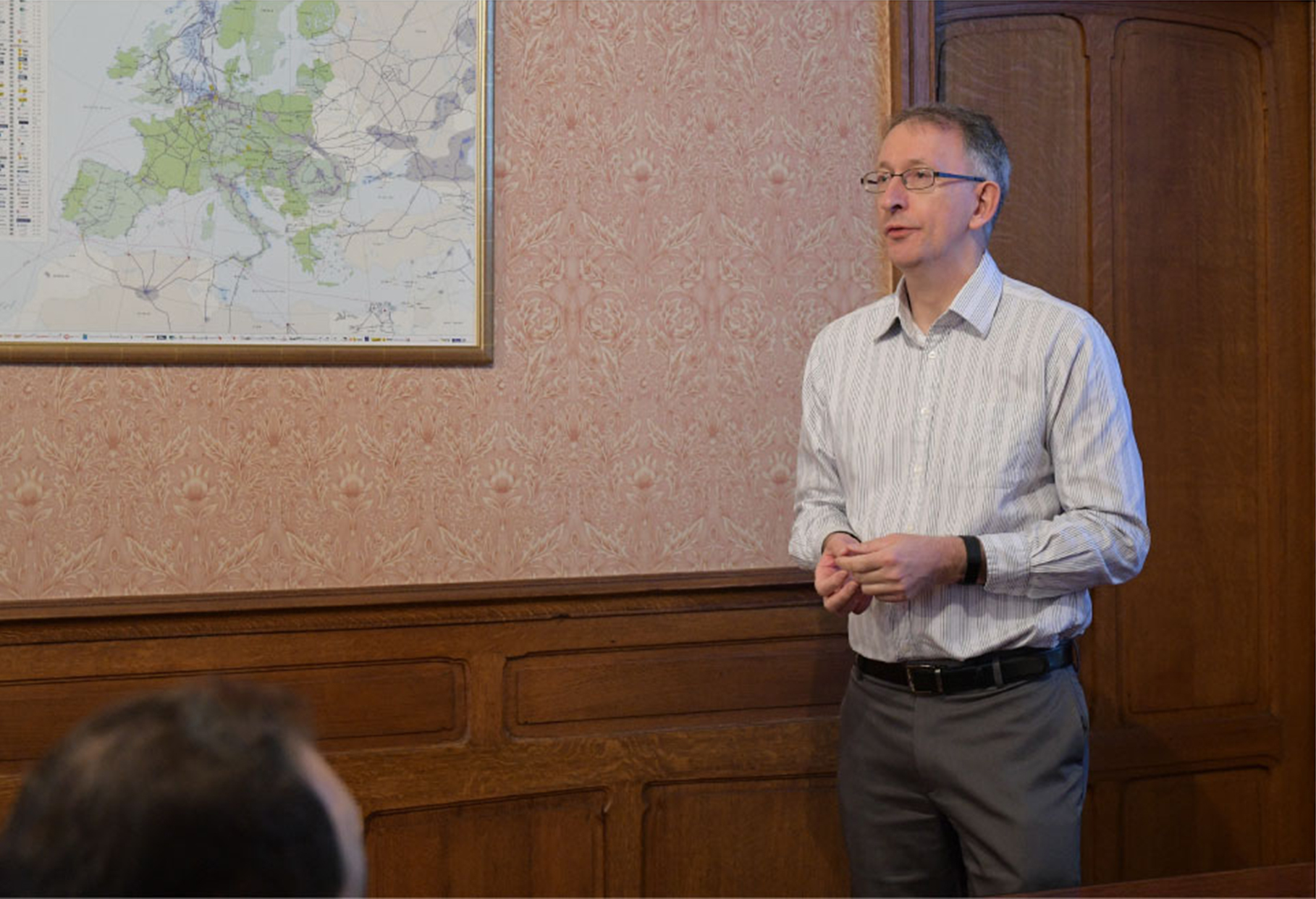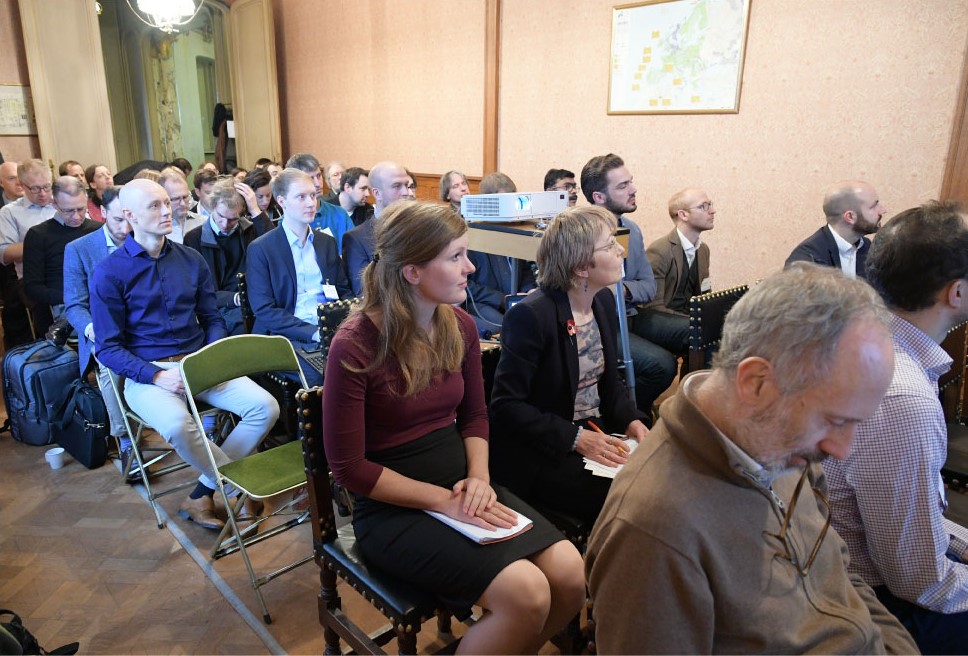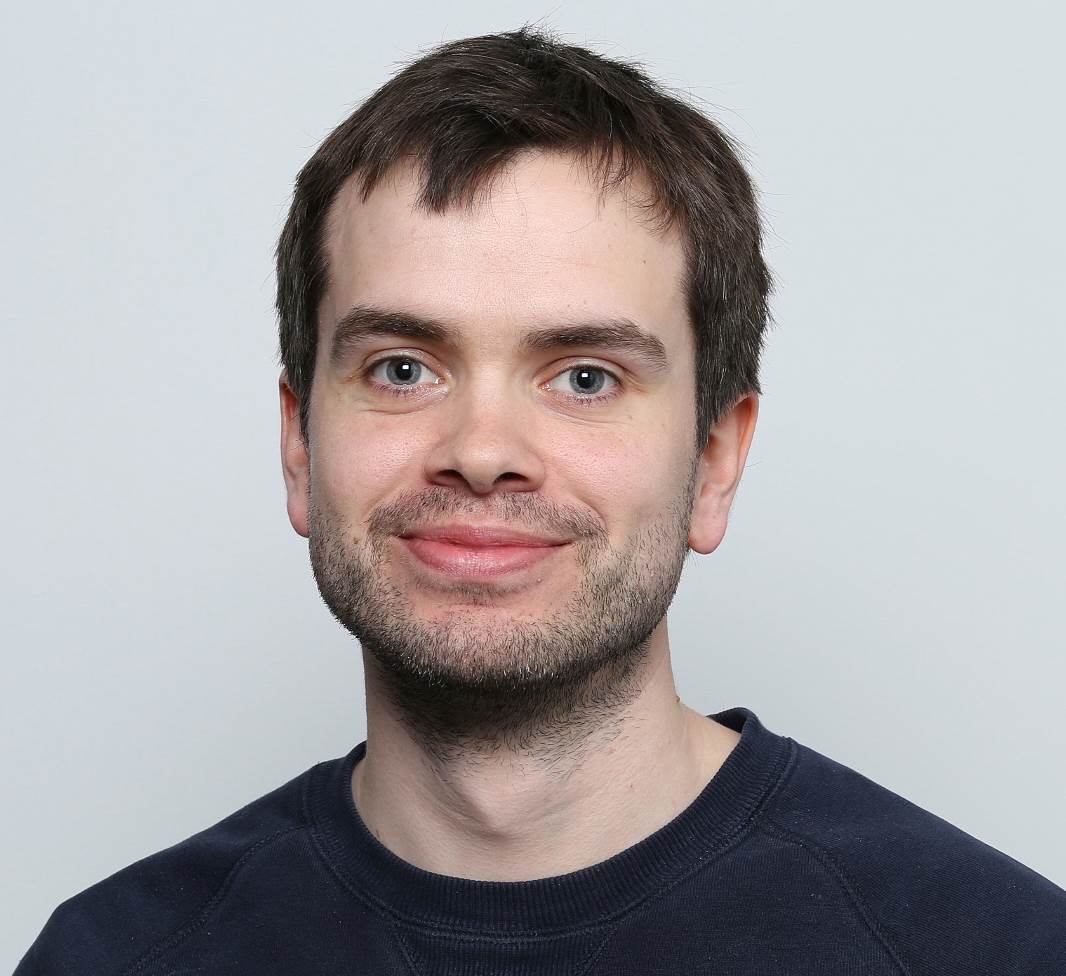On 9 November the third ELEGANCY Consortium meeting was held in Brussels, Belgium. With ELEGANCY’s main research focus CCS and hydrogen in mind, the European Gas Research Group (GERG) was a perfect fit to host the event. GERG Brussels offices are in the UNESCO World Heritage listed building Hôtel van Eetvelde.
After being welcomed by GERG’s Secretary General Robert Judd, the consortium was briefed on the latest developments in ELEGANCY. This included presentations on
- An improved method for low-carbon hydrogen production from natural gas with vacuum pressure swing adsorption – Anne Streb (ETHZ)
- Long-term stability tests of catalysts for water gas shift for use with basic oxygen furnace gas from steel plants – Jean-Pierre Pieterse (ECN>TNO)
- Experimental results on the thermodynamics of mixtures with hydrogen – Alexander Maurer (RUB)
- Case study: decarbonization of the Rotterdam port area – Rajat Bhardwaj (TNO) and Lukas Weimann (UU)
- Case study: UK profiles of CO2 supply for H2 and CCS, present day to 2100 – Maxine Akhurst (BGS)
- Measurements on CO2 solubility in saline water, necessary for CO2 storage modelling – Geraldine Torín-Ollarves (ICL)
- A demonstration of the chain tool that will be applied to ELEGANCY’s five case studies – Diana I. Ferrer and Nixon Sunny (ICL)
- The policy issues and business risks associated with CCS and hydrogen, and the corresponding de-risking instruments and incentive mechanisms – Ward Goldthorpe (SDL)
After the talks, scientific discussion and lunch, the Consortium split into task groups for more in-depth technical discussions. This concluded the second day of the semi-annual ELEGANCY meeting.
Read more about the first day:















Comments
No comments yet. Be the first to comment!